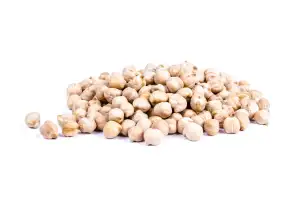Unveiling the Essence of Brandy: A Delectable Dive into the World of Distilled Elegance

Brandy, a luxurious and sophisticated spirit, has been cherished for centuries for its rich flavors and aromas. Derived from the distillation of wine or fermented fruit juices, brandy offers a unique experience that tantalizes the senses. Whether enjoyed neat, in cocktails, or used as an ingredient in cooking, brandy adds depth and complexity to any dish. In this article, we will delve into the world of brandy, uncovering its essence and exploring its versatility in the culinary realm. So grab a glass and join us on this delectable journey into the world of distilled elegance.
Definition of Brandy
Brandy, a beloved spirit with a rich history, is a type of distilled alcoholic beverage made from fermented fruit juice or wine. It is typically aged in oak barrels, which imparts unique flavors and aromas. With its amber hue and smooth texture, brandy is often considered a luxurious drink that exudes elegance and sophistication. The term "brandy" comes from the Dutch word "brandewijn," meaning "burnt wine," reflecting the process of distillation that gives this spirit its distinctive character.
Distillation Process of Brandy
The distillation process of brandy is a meticulous and time-consuming art. It begins with the fermentation of fruit, typically grapes, to create a base wine. This wine is then distilled using a pot still or column still, which separates the alcohol from impurities through heating and condensation. The resulting liquid, known as "eau-de-vie," is aged in oak barrels for several years to develop its distinct flavors and aromas. The longer the aging process, the smoother and more complex the brandy becomes. This delicate process requires patience and skill to achieve the perfect balance of flavors that make brandy such a refined spirit.
Types of Brandy
Brandy comes in various types, each with its own distinct characteristics and flavors. The most common types include:
1. Cognac: Considered the pinnacle of brandy, Cognac is produced in the Cognac region of France. It is known for its rich and complex flavor profile, with notes of fruit, oak, and spice.
2. Armagnac: Another French brandy, Armagnac is produced in the Armagnac region. It has a more rustic and robust flavor compared to Cognac, with hints of dried fruit, leather, and earthiness.
3. American Brandy: Made in the United States, American brandy can vary in style and flavor. It is often aged in oak barrels, resulting in a smooth and mellow taste.
4. Spanish Brandy: Produced in Spain, Spanish brandy is known for its intense flavors and aromas. It is typically aged using the solera system, which imparts a unique character to the spirit.
5. Fruit Brandy: This type of brandy is made from fermented fruits other than grapes. Examples include apple brandy (e.g., Calvados) and cherry brandy (e.g., Kirsch). Fruit brandies offer a range of fruity flavors that complement various dishes.
Each type of brandy has its own distinct qualities that make it suitable for different culinary applications. From elegant cocktails to flavorful sauces and desserts, brandy adds depth and complexity to any dish it's used in.
Popular Brands of Brandy
When it comes to popular brands of brandy, there are a few names that stand out in the world of distilled elegance. One such brand is Hennessy, known for its rich and smooth flavor profile. Another renowned brand is Rémy Martin, famous for its high-quality cognac. Courvoisier is also highly regarded for its fine craftsmanship and exceptional taste. For those looking for a more affordable option, Torres and E&J are popular choices that offer great value without compromising on flavor. These brands have established themselves as leaders in the industry, consistently delivering exceptional quality and taste that keeps brandy enthusiasts coming back for more.
Culinary Uses of Brandy
Brandy is not just a spirit for sipping; it also adds depth and complexity to a wide range of culinary creations. Its rich, fruity flavors make it a versatile ingredient in both sweet and savory dishes. In desserts, brandy can be used to enhance the flavor of fruits, such as poached pears or cherries jubilee. It can also be added to sauces and glazes for meats, lending a subtle sweetness and depth of flavor. When used in marinades, brandy helps tenderize meat while imparting a unique taste. Whether it's flambeeing shrimp scampi or adding a splash to creamy mushroom risotto, brandy brings an elegant touch to any dish.
Pairing Brandy with Food
Brandy, with its rich and complex flavors, is a versatile spirit that can elevate the taste of various dishes. Its smoothness and depth make it an excellent choice for pairing with food. When selecting a brandy to accompany your meal, consider the flavors and intensity of both the brandy and the dish.
For hearty meat dishes like beef or lamb, opt for a bold and aged brandy such as Cognac or Armagnac. The robust flavors of these brandies complement the richness of the meat, creating a harmonious balance. For lighter meats like poultry or fish, a younger and fruitier brandy like Calvados or American apple brandy can provide a refreshing contrast.
When it comes to desserts, brandy can be a delightful addition. It pairs exceptionally well with chocolate-based desserts, enhancing their decadence. Aged brandies with notes of caramel and vanilla are particularly suited for this pairing. Additionally, fruit-based desserts like tarts or crumbles can be elevated by serving them alongside a fruit-infused brandy.
Cheese lovers will also find joy in pairing brandy with their favorite cheeses. The complexity of aged brandies complements the savory flavors of hard cheeses like Parmesan or Gouda. Alternatively, try pairing a sweeter brandy with creamy cheeses like Brie or Camembert for a delightful contrast.
Remember to experiment and trust your palate when pairing brandy with food. Each combination can create unique flavor profiles that enhance your dining experience. Whether you're enjoying a hearty meal or indulging in dessert, exploring the world of brandy pairings adds an extra layer of sophistication to your culinary adventures.
Brandy Cocktails and Recipes
Brandy is not only a delightful drink on its own, but it also adds depth and complexity to cocktails. Here are a few classic brandy cocktails that you can easily make at home.
1. Brandy Sour: Mix 2 ounces of brandy, 1 ounce of lemon juice, and 1 teaspoon of sugar syrup in a shaker with ice. Shake well and strain into a glass filled with ice. Garnish with a lemon slice.
2. Sidecar: Combine 2 ounces of brandy, 1 ounce of orange liqueur, and 1 ounce of lemon juice in a shaker with ice. Shake vigorously and strain into a chilled cocktail glass rimmed with sugar.
3. Brandy Alexander: In a blender, blend 2 ounces of brandy, 1 ounce of dark crème de cacao, and 1 ounce of cream until smooth. Pour into a martini glass and sprinkle nutmeg on top.
4. Brandy Old Fashioned: Muddle an orange slice, cherry, sugar cube, and a dash of bitters in a glass. Add ice cubes and pour in 2 ounces of brandy. Stir gently and garnish with an orange twist.
These cocktails showcase the versatility of brandy in creating both refreshing and indulgent drinks. Experiment with different ingredients to create your own signature brandy cocktails that suit your taste preferences. Cheers!
Tips for Buying and Storing Brandy
When it comes to buying and storing brandy, there are a few tips to keep in mind. Firstly, it's important to choose a reputable brand or distillery known for producing high-quality brandy. Look for brands that have been around for a long time and have a good reputation.
When purchasing brandy, consider the age and type of brandy you prefer. Older brandies tend to be smoother and more complex in flavor, while younger ones may have a sharper taste. Additionally, different types of brandy, such as Cognac or Armagnac, offer distinct flavors and characteristics.
When storing brandy, keep it in a cool, dark place away from direct sunlight and heat sources. The ideal temperature for storing brandy is between 10-20°C (50-68°F). Avoid storing it near strong-smelling substances as brandy can absorb odors easily.
To maintain the quality of your brandy over time, make sure the bottle is tightly sealed after each use. Oxygen exposure can affect its flavor and aroma. If you have an unfinished bottle of brandy, consider transferring it into a smaller container to minimize air contact.
Lastly, remember that not all brandies improve with age. Some are meant to be enjoyed young while others benefit from aging. It's always best to consult the recommendations provided by the producer or seek advice from knowledgeable experts when choosing which bottle of brandy to buy and how long to store it.
By following these tips for buying and storing brandy, you can ensure that you're getting the most out of this exquisite spirit both in cooking and sipping experiences alike.
In conclusion, the versatility of brandy in cooking is truly remarkable. From enhancing the flavors of savory dishes to adding depth and complexity to desserts, brandy has a unique ability to elevate any culinary creation. Its rich and complex flavor profile, along with its ability to blend seamlessly with other ingredients, makes it a valuable tool in the hands of any chef or home cook. Whether you're deglazing a pan, creating a delectable sauce, or infusing your favorite dessert with a touch of elegance, brandy is sure to impress. So go ahead and unleash your culinary creativity with this distilled elegance and discover the endless possibilities that brandy brings to your kitchen.
Published: 24. 11. 2023
Category: Food



